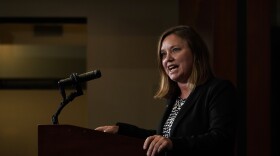Driven by job losses, changes in federal rules, and an increased focus on health care during the coronavirus pandemic, enrollment in Pennsylvania’s Medicaid program has swelled by more than 400,000 people over the last year, according to statistics from the state.
Enrollment in the state's Medical Assistance program increased by 14.7% between February 2020 through March of this year, the most recent statistics available.
In addition to pandemic-driven economic hardship, some of the large enrollment numbers are likely fueled by federal rules that say once an individual is enrolled in Medicaid, they can stay enrolled, with limited exceptions, state human service officials said. That keeps people from leaving the program if their income rises, and fewer people are being removed due to failure to submit renewal paperwork or related processing errors that would often kick people off the program before the pandemic struck.
When Congress enacted the Families First Coronavirus Response Act last year, it instituted the freeze as a condition of states receiving enhanced federal money to support their Medicaid programs, said Laura Stephany, health policy manager at Pittsburgh-based Allies for Children.
Most states have seen gains in enrollment; Pennsylvania’s is about the middle of pack, percentage-wise, said Joan Alker, executive director of the Georgetown University Center for Children and Families, and an expert on state Medicaid programs.
While job losses played a big role in why more people signed up for the program, there was also the pandemic-driven increased attention on the need for access to health care, said Antoinette Kraus, director of the Pennsylvania Health Access Network.
"Folks are now more concerned about having the tools they need to access the health care system,"she said. "Medicaid's been one of the biggest tools we have at fighting the pandemic and making sure people have health insurance coverage."
Pennsylvania’s 2020 switch to a state-based website and exchange for federal Affordable Care Act marketplace plans and the attention and publicity on that might have also drawn in more Medicaid consumers, Kraus said.
The program now covers more than 3.2 million Pennsylvanians statewide; many of these individuals are disabled, low-income, or children.
But while growth in Medicaid enrollment in Pennsylvania has been consistent during the pandemic; that’s not true of every public assistance program.
“There's no requirement from any of the other programs that we keep people on the benefit. So, unlike Medicaid, we see people continually come on and off,” said Cathy Buhrig, the director for the bureau policy in the Office of Income Maintenance in Pennsylvania's Department of Human Services.
Enrollment in the Supplemental Nutrition Assistance Program, or SNAP, commonly known as food stamps, has seen increases and decreases during the pandemic, according to state statistics. Enrollment in welfare has declined.
Steven Fox’s family was among those who enrolled in Medical Assistance last year. Fox, a Pittsburgh resident who is self-employed in the real estate sector, said he stumbled across the program last year, after one of his children had a choking mishap and he was faced with a staggeringly large hospital bill. He urged anyone in need of healthcare to apply for the program.
“The amount of help that it could provide for a family is just astronomical,” he said.
To see if you qualify for health coverage through Medical Assistance, visit www.compass.state.pa.us or call 1-800-692-7462.




